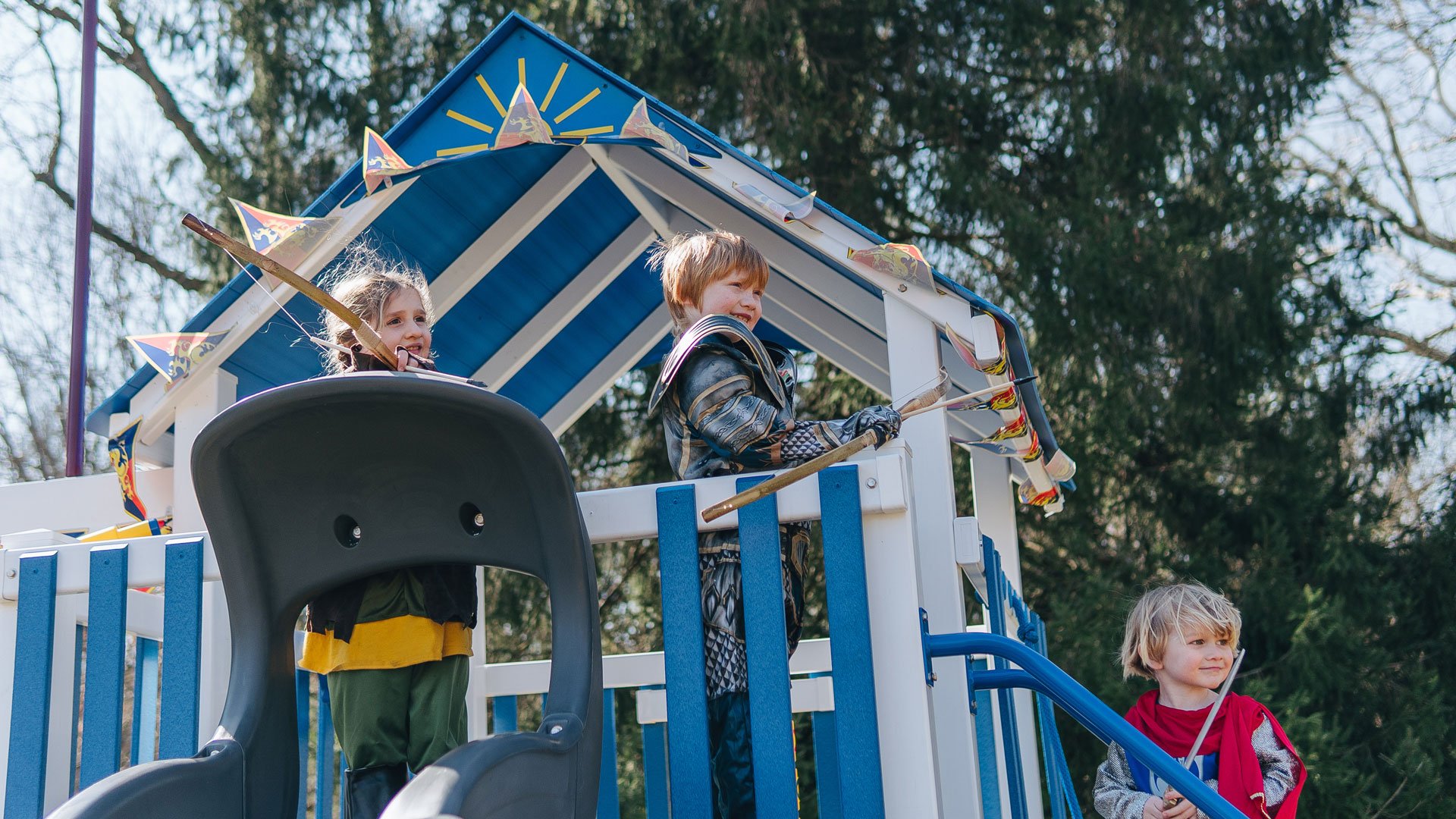
Why are swing sets and playhouses the perfect antidote to boredom and an ever-increasing pile of plastic, cheap toys that threaten to bury us parents in an avalanche of more, more, more as we try to keep our kids entertained? It's a big question; honestly, it can be a touchy one. One thing I know is that we parents are all trying our best. There is no judgment here.
Here is a scene we are all familiar with. It starts with a crunch. As I enter my kid's bedroom, the cheap plastic toy under my heel offers little resistance to my weight. I stop, my foot poised above the destruction I rendered below, I glance about the room and ask the question many of us parents have asked: “How did we get so many toys? What is all this stuff?”
So many of our toys had missing pieces, made horrible sounds, or were just impulse purchases or well-meaning gifts from various relatives (looking at you, Grandma). But with such a horde, why were my kids playing with all of them? Why did they still beg for screen time?
The Problem
The following thoughts are based on the book Simplicity Parenting by Kim John Payne. I highly recommend it.
Here is one of the fundamental issues with many of the toys my kids used to own: they were not passive or receptive toys. This means that there was only really one way to play with them. Think of the Hot Wheels race car track: It has a specific way to be set up and used and doesn’t lend itself to flexible play. All the children have to do is set the car at the top and watch it go down. The track does the playing, and the children watch.
Contrast the Hot Wheels race track with simple wooden blocks or a stuffed animal. Both of those toys can be included in any creative adventure. They don’t play for the child; the child’s mind has to add the details, the noise, and the wonderful stories.
The Solution
A passive or receptive toy requires children to do what they are best at: play creatively and not be entertained by external forces. The children play with the toy as the actor, while the toy is the receptor. It should not be the other way around.
The problem is that many toys in stores today are not passive or receptive toys. They whirl, hum, beep, flash, shoot, break, and more or less entertain, but not spark actual play. In general, if the toy is the thing doing the acting, consider replacing it with a more passive option. This is especially true for those toys that make hideous noises that drive you mad.
Why does this matter?
Kids get bored quickly with toys that do the playing for them. Imaginative play is a muscle that atrophies with neglect and strengthens with use. A child whose toys bore him because he cannot use them creatively struggles to use his imagination in his play, which makes turning to screens or even their parents for entertainment the default choice.
A child with passive toys learns to entertain themselves (it is a process, for sure, not an overnight development) and develops an active imagination. They do not depend on parents, screens, or the next newest toy for their ever-expanding horde. Rather, they constantly find new ways of using their passive toys.
How King Swings Helps

Now, the question that needs to be asked is: Is a swing set or playhouse a passive toy?
Let’s think about it. A backyard swing set or vinyl playhouse can be a space station one afternoon and a Ninja fortress the next. The swings can be just swings or, if you squint just right with your mind’s eye, they can be the platform your children use for an elaborate game of kick the ball, with one child laughing hysterically, swinging, and trying to kick a ball their sibling or friend is tossing to them.
The slides can be used just as slides, sure, but they are actually the super-fast, super-secret exit from the castle the heroes use when the dragon attacks (spoiler: you are the dragon). The rockwall is not just a rockwall, oh no, it is the dangerous rocky crag the spies are using.
And don’t get me started on everything your extra-large playhouse morphs into. From restaurants, lairs, hideouts, and fairy tale castles, the playhouse or swing set partners perfectly with your children’s pretend play.
Amish-made swing sets and backyard playhouses help families everywhere reduce children’s need for more cheap, plastic toys and the reliance on external devices or people for entertainment. They help teach creative play that doesn’t rely on the parents having time to join in. Playsets help turn your backyard into a hub of magical adventures and epics of daring heroes.
Next Step
King Swings has 35+ years of handcrafting swing sets and playhouses, and our 500+ five-star reviews testify to our skill, ability, and customer care. We love to partner with families all across America to design the perfect playhouse swing set for their kids, their space, and their budget. Get in touch with us today and bring the playground home! A great place to start is our 2025 Swing Set Guide.

Dad to three kids, Justin knows how important it is for children to get lots of physical exercise. His time as a school teacher reinforced that idea. He is passionate about creating fun, enjoyable playgrounds that are safe but full of learning opportunities.
Read More Justin Doutrich
